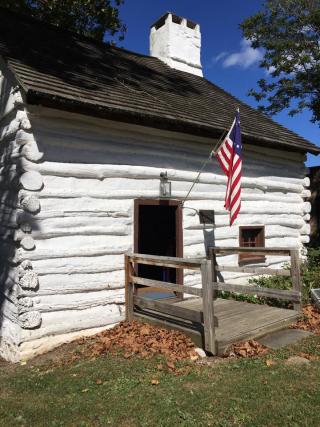History of the Log House

In 1681 William Bayley purchased 500 acres of land along the Brandywine from the Penn Family. Upon his death 375 acres of this land was passed down to Bayley’s nephew, Jacob Button. Jeremiah Collett arrived in the area in 1682 and purchased Button’s land in 1701. In 1702 Collett filed a warrant for the property and a survey was completed the same year. Deputies for William Penn issued a patent in 1703. In order to obtain a patent it was necessary for some improvement to have been made to the land. But it’s not clear if Jeremiah Collett built the Log House or if it was Joseph Hickman who purchased the land in 1705. Hickman, who also arrived in the area in 1682, sold the property in 1713 to Thomas Moore who eventually purchased additional land. Moore built a grist mill in 1716 which was the first industry in the village. The following year he applied for a tavern license, which was granted. Moore died in 1738 and by 1739 Thomas Downing had acquired the property on which the Log House stood. The House remained in the Downing family for about 200 years. The last family to live in the Log House was the Boggs family. Thomas W. Downing’s 1937 will left the Log House and adjoining property to the Borough of Downingtown. Downing died in 1940 and restoration took place in 1947. The Downingtown Chamber of Commerce occupied the Log House from 1950 to 1988. The Log House sat below street level and was very close to Business Route 30 (Lancaster Avenue). Water run off and vibration from traffic was taking its toll on the structure. From 1988 to 1990 the House went through a complete restoration. It was moved approximately 70 feet from its original location. Its new foundation sits back from the busy road and is more level with the road.

